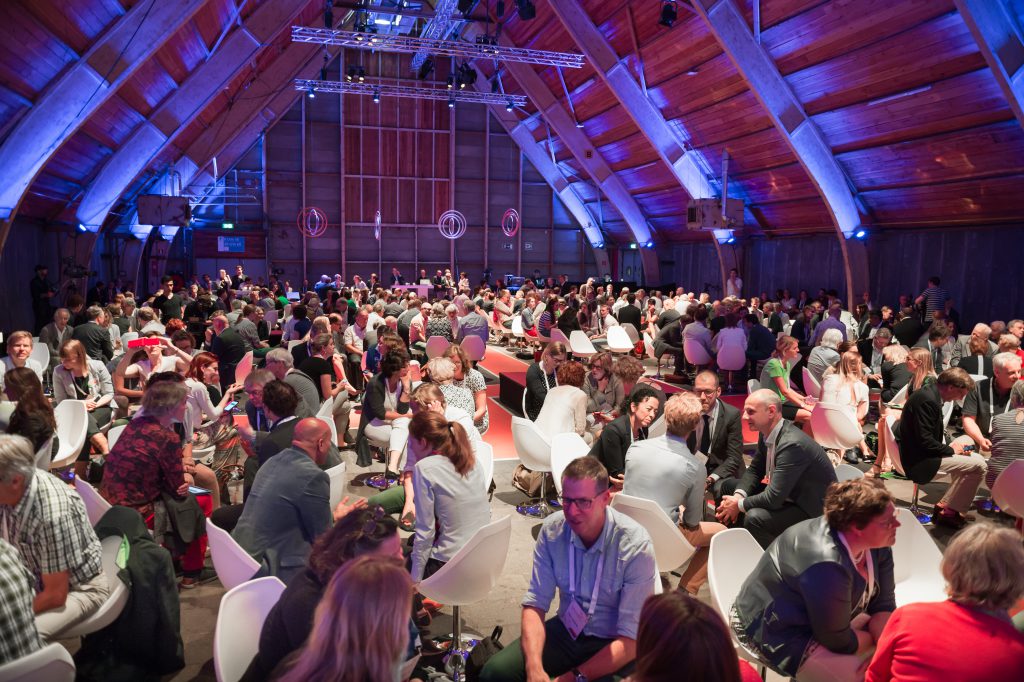A fully planned out event agenda is usually the result of months of preparation. Fun and educational for your guests, but not every event goal benefits from this approach. During an Unconference your guests plan the agenda of the day while you decide on a general theme of topic. Everyone who thinks they can contribute to the theme, or just wants a question answered, can propose a session. This approach ensures all available knowledge is being used. Guest quickly transform into participants. This way, it is possible to take on difficult organizational themes and topics. Unconferences have an amazing impact because every participant is getting involved and everyone has influence on the outcome. We’ll help you with 7 tips for a successful Unconference!
1. Make sure your general theme is the right fit
Unconferences are all about the input of the participants. That’s why it’s very important to make sure your theme fits the format. The right theme is clear, has focus, but also leaves enough room for imagination and creativity. A good Unconference stimulates two feelings within your participants: passion and responsibility. A successful Unconference is determined by the passion of the participants which is being fed by their sense of responsibility towards the theme.

2. Stick to the rules
Sounds simple right? During an Unconference the rules aren’t as crystal clear as you would like though. The applied rules are there to explain which thinking process should be leading during an Unconference. In comparison with other types of events, an Unconference doesn’t force anything upon the participants. During an Unconference it’s all about quality, not quantity. The rules are as followed:
- Whoever shows up are the right people
- Whatever happens is fine
- Whenever it starts is the right time
- It is over when it is over
3. Know the law
Besides to the four rules, there is only one law to be considered during an Unconference. This ‘law of two feet’ entails all participants are obligated to contribute to the Unconference as optimal as possible. Whenever you get the feeling you joined the wrong session and you’re not contributing – learning is considered contributing – you are obligated to leave and join another session. This ensures less productive sessions finish quickly while productive sessions get the attention they deserve.
4. Choose the right venue and time
It’s important for an Unconference venue to at least have a plenary room with an big, empty wall. An Unconference usually starts in a big circle, so make sure it is possible to rearrange the seats. Open Space Technology teaches us this setting stimulates discussions. It is also vital to have access to sub rooms – or to create seperate spaces in the plenary room – so sessions don’t disturb each other. To ensure all participants show up on a voluntary basis, choose a saturday or sunday to host your Unconference. The first rule of Unconferences is applied here. Keep in mind, an Unconference is only effective when participants attend the full day!

5. Communication is key
To attract enough – motivated – people, communication is key. Your invitation must leave something for people to fantasize about. Make sure your invitation is clear about the theme and describe what people can expect from an Unconference. Be very clear on duration of the event. Participants only benefit if they can be there from start to finish!
6. Make sure the food is inspiring
During an Unconference it is important to let the catering moments feel like leisure. Let participants pick what they like or let them step out of their comfort zone. Offer food which sparks conversation. An open buffet is a good example. You don’t want a very productive session to end abruptly due to a lunch signal, so make sure isn’t only opened on specific times.
7. Practice
The start of an Unconference can be a little awkward for your guests. When organizing an Unconference, the facilitator has a responsibility to take these feelings away. Practice your opening speech en prepare yourself for any question your audience might have. It is important to start with the theme of the day. Why are we here? Afterwards you’ll describe the upcoming steps. Emphasize the passion and feeling of responsibility your participants have. How will the Unconference play out? The next step is filling the event agenda. Everyone can propose a session or write down a question they would like to have answered. Make sure there is a sense of safety, so participants aren’t afraid to open up. What are we doing today? The ‘Marketplace’ is the last step. Every participant writes down which session they would like to participate in. All sessions must be documented so when the time slot of two sessions overlap, it won’t be a problem. Who’s doing what?

 How to's
How to's


